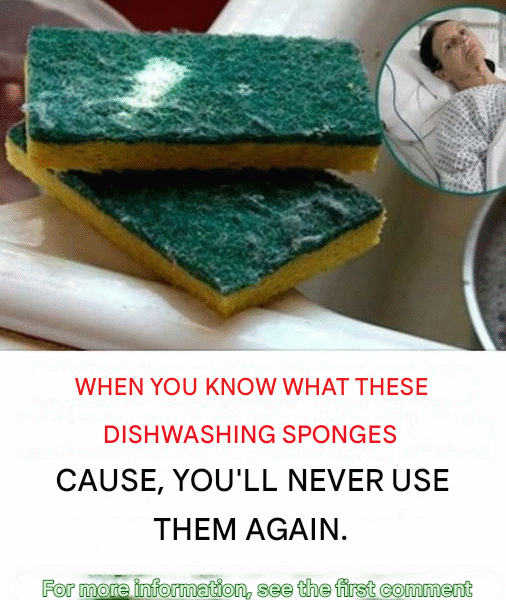When You Know What These Dishwashing Sponges Do, You’ll Never Use Them Again
They sit innocently by your kitchen sink—those colorful, porous dishwashing sponges that we rely on every day to scrub away grease and grime. But what if we told you that these common cleaning tools might be doing more harm than good? Once you understand what dishwashing sponges are really harboring, you might think twice before reaching for one again.
A Breeding Ground for Bacteria
Research has shown that the average dishwashing sponge is one of the dirtiest items in the entire home—even dirtier than your toilet seat. Why? Because sponges are constantly moist, full of food particles, and full of nooks and crannies, making them the perfect breeding ground for bacteria. In fact, a study published in the journal Scientific Reports found that a single used sponge can contain over 362 different types of bacteria, including potentially harmful strains like E. coli and Salmonella.
Washing dishes with a sponge that’s teeming with bacteria doesn’t just mean you’re failing to clean properly—it could be spreading germs across your kitchenware and surfaces.
Sponges Are Nearly Impossible to Clean
You might think microwaving or boiling your sponge solves the problem, but it’s not that simple. While heat can reduce some bacterial growth, it doesn’t kill all pathogens. Worse, repeated attempts to sanitize sponges may lead to an increase in the most dangerous bacteria, which are more resistant and adapt to survive.
Even if a sponge looks clean or smells fine, it could still be swarming with microbes invisible to the eye.
Cross-Contamination Risk
Using the same sponge to clean dishes, countertops, and sinks increases the risk of cross-contamination. The sponge can transfer bacteria from raw meat juices or dirty surfaces onto your clean dishes. This silent danger is especially risky for households with small children, elderly individuals, or anyone with a weakened immune system.
More Than Just Bacteria: Mold and Odors
In addition to bacteria, sponges are prone to developing mold and bad odors over time. That funky smell? It’s usually a sign of bacterial or fungal growth. These odors can transfer onto dishes and even affect the smell of your kitchen. Replacing sponges frequently is a short-term solution, but the underlying hygiene problem remains.
Healthier Alternatives to Dishwashing Sponges
Fortunately, there are safer, more hygienic alternatives that can replace your traditional sponge:
- Silicone scrubbers – easy to clean, non-porous, and fast-drying
- Dish brushes – don’t retain water and dry quickly
- Microfiber cloths – machine washable and reusable
- Compostable scrub pads – made from natural fibers and biodegradable
- Paper towels for quick cleanups – avoid reusing them and reduce contamination
You can also dedicate separate cleaning tools for different tasks (e.g., one for dishes, one for countertops) to further reduce bacterial spread.
Your sponge might seem like a small detail, but it plays a big role in your kitchen’s hygiene. If you truly want to keep your kitchen clean and your family safe, it’s time to say goodbye to that germy old sponge.
Did this surprise you? Spread the word by liking and sharing this post—help others keep their kitchens clean and safe too! 🧽🚫✨
